Interview with Syd Mead
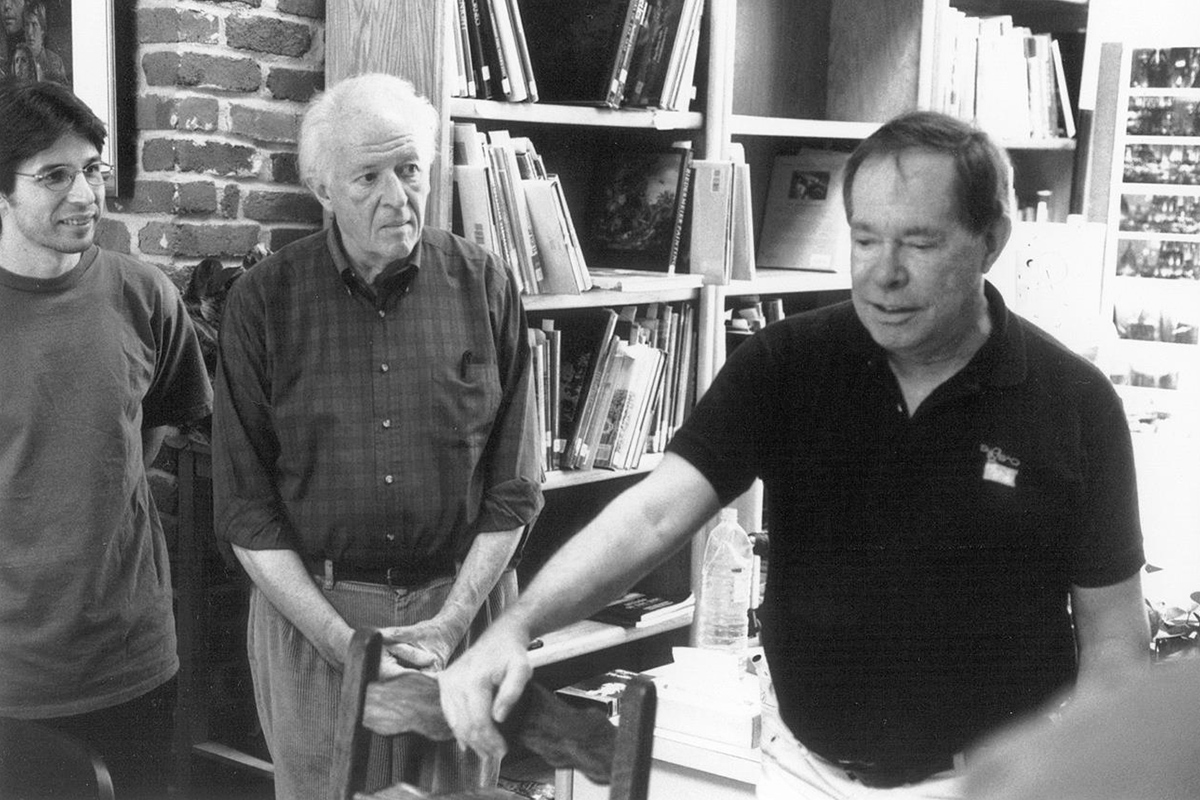
Science-fiction fans will be familiar with Syd Mead’s work even if they don’t know his name. The Imperial AT-AT Walkers in Star Wars were based on a Mead design. He designed the flying car of Blade Runner, and indeed many other technologies in that movie. He worked on Aliens, Tron — and Star Trek: The Motion Picture.
In the summer of 2005, I asked Mead about his Star Trek work. Here is a lightly edited copy of our email exchange.
Interview
How did you get involved in Star Trek: The Motion Picture, and what was the extent of your work?
I received a call from John Dykstra. He asked, “Syd, would you like to work on a science-fiction picture?” I replied, “Sure.” I agreed to meet him and his partner in Apogee, Bob Shepherd, at the Century Plaza Hotel for lunch.
I drove up on the appointed day, found out a bit about the film and took an early script home with me. The task? To design the V’Ger entity.
Now, I did not know at the time that the V’Ger entity had been approached by another studio headed by Bob Abel. The director, Robert Wise, didn’t understand computer stuff, so Abel’s studio got dumped and I started work.
The production company had already paid some guy on the East Coast to design and build a six-sided, articulated aperture thing. When you rotated it, the aperture would open and close. It was really neat. I was told to incorporate that thing in my design, since Paramount had already paid him for it. That generated my design.
At a meeting at Apogee with John, Bob Shepheard, Robert Wise and [Jeffrey] Katzenburg, I was asked, “What is it, Syd?” I answered — referring to my design — “V’ger is a six-axial, longitudinal expression of its own geometric dynamics.” John looked at me and responded with: “Whatever, Syd.”
I was traveling back and forth to Europe at the time with an account with Raymond Loewy’s Paris studio and with Philips down in Eindhoven, Holland. The film was “just another design job” for me; there wasn’t a shred of “mystic bafflement,” fawning excitement or anything else that differentiated working on Star Trek [from what] I would feel for any job that came through the door. Being invited into the film industry was, for me, just another kind of design challenge. I was not overwhelmed by the Hollywood mystique.
At one of the meetings, Robert Wise turned to me and asked, “Syd, when can we expect the next batch of sketches?” I replied, “Well, I’m going to Holland on Monday for about two weeks. I could do them there, I guess.”
Wise turned to Katzenburg. “Jeff, we have an office in Amsterdam, right?” Katzenburg confirmed. Wise continued: “Have a courier pick up Mead’s sketches every two days and get them back here with our courier flight.”
And that’s how it happened. I’d design toasters, video recorders, shavers and phono systems during the day, go to the hotel, drag out a sketch pad and do V’Ger until about 11 at night. Then, every other day, I’d leave my drawings with the concierge and they would be in Hollywood within 36 hours.
The wrap party was eleborate. A huge cake had been made to look like the Enterprise. There was free booze, food, festive “movie folk” and all in all a swell deal.
Roger and I were invited two years ago to the Paramount digital theater to see the digital remastered version of Star Trek: The Motion Picture. Robert Wise, that grand old gentleman of studio renown, was there.
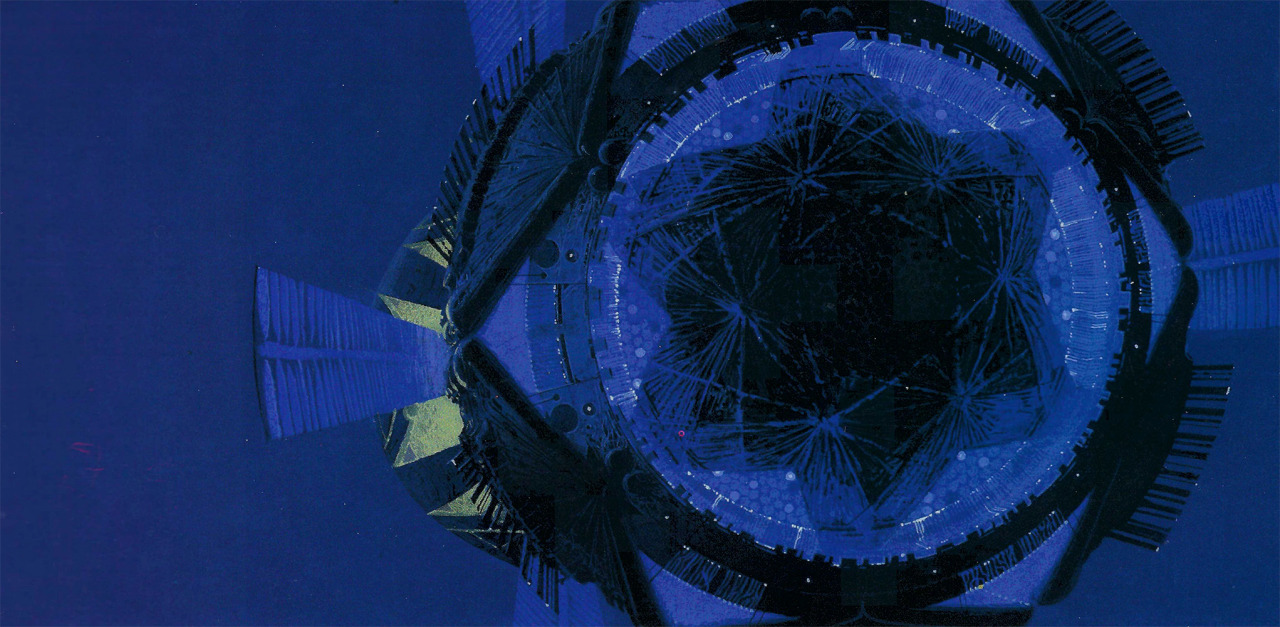
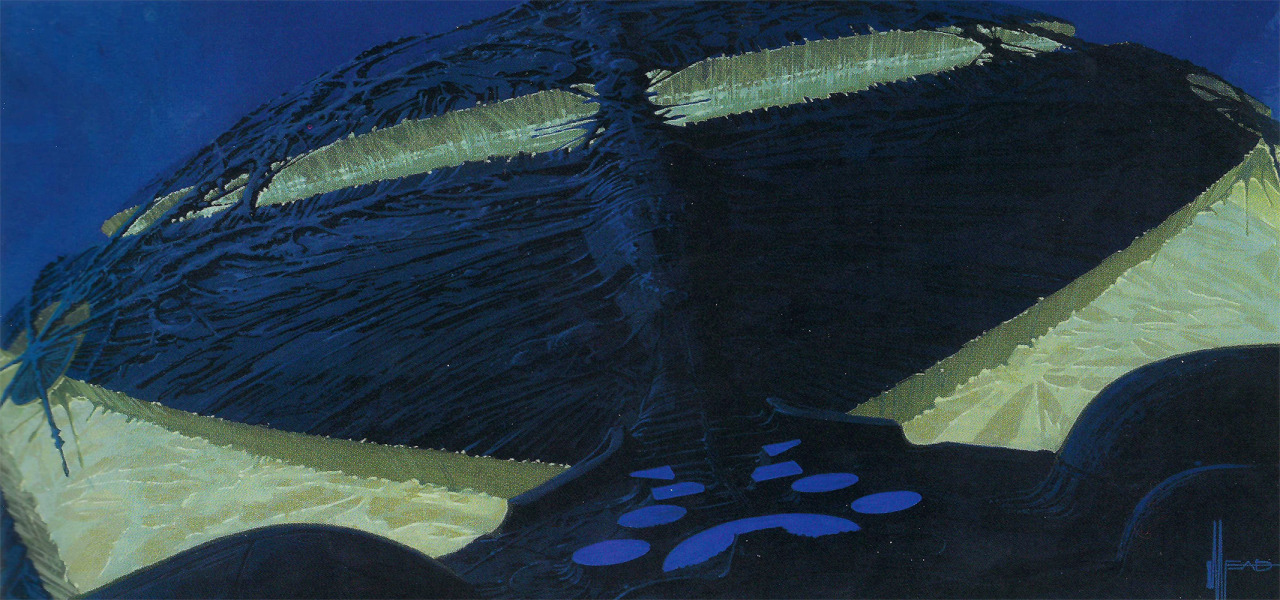
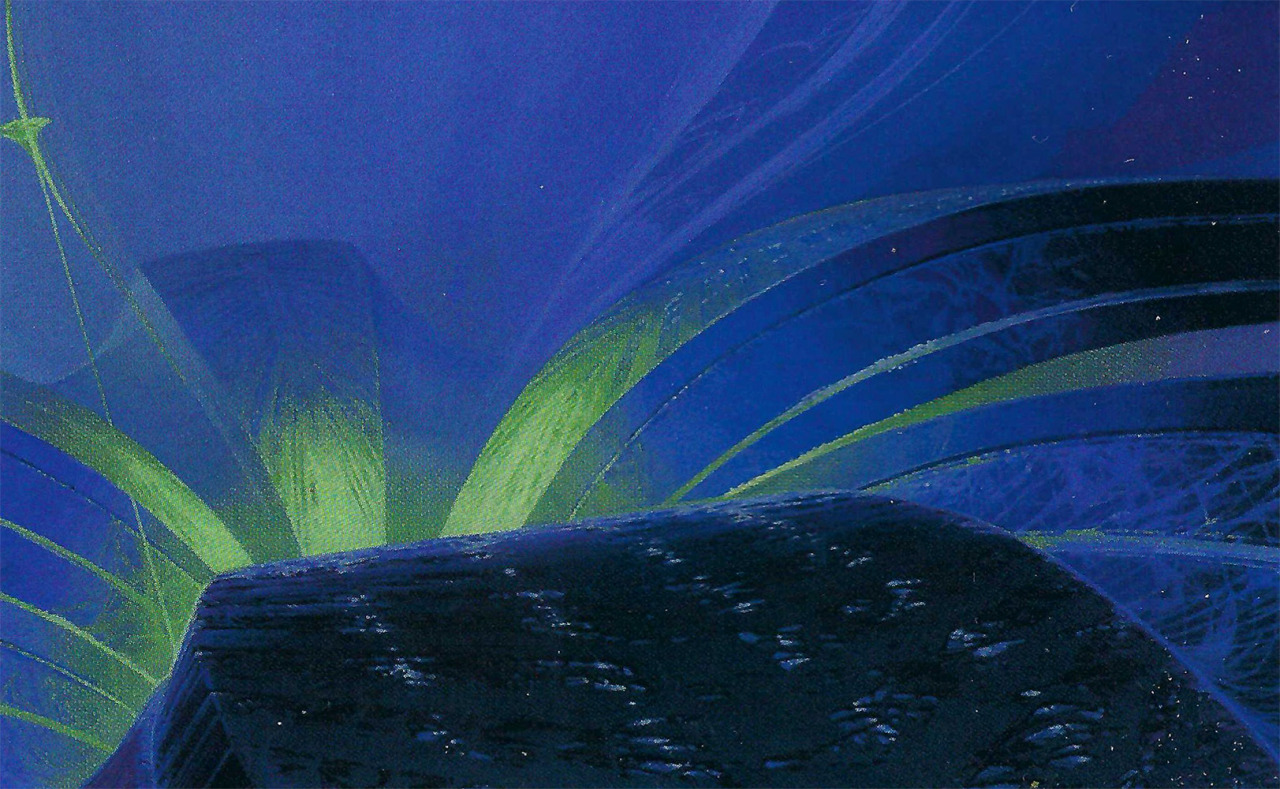
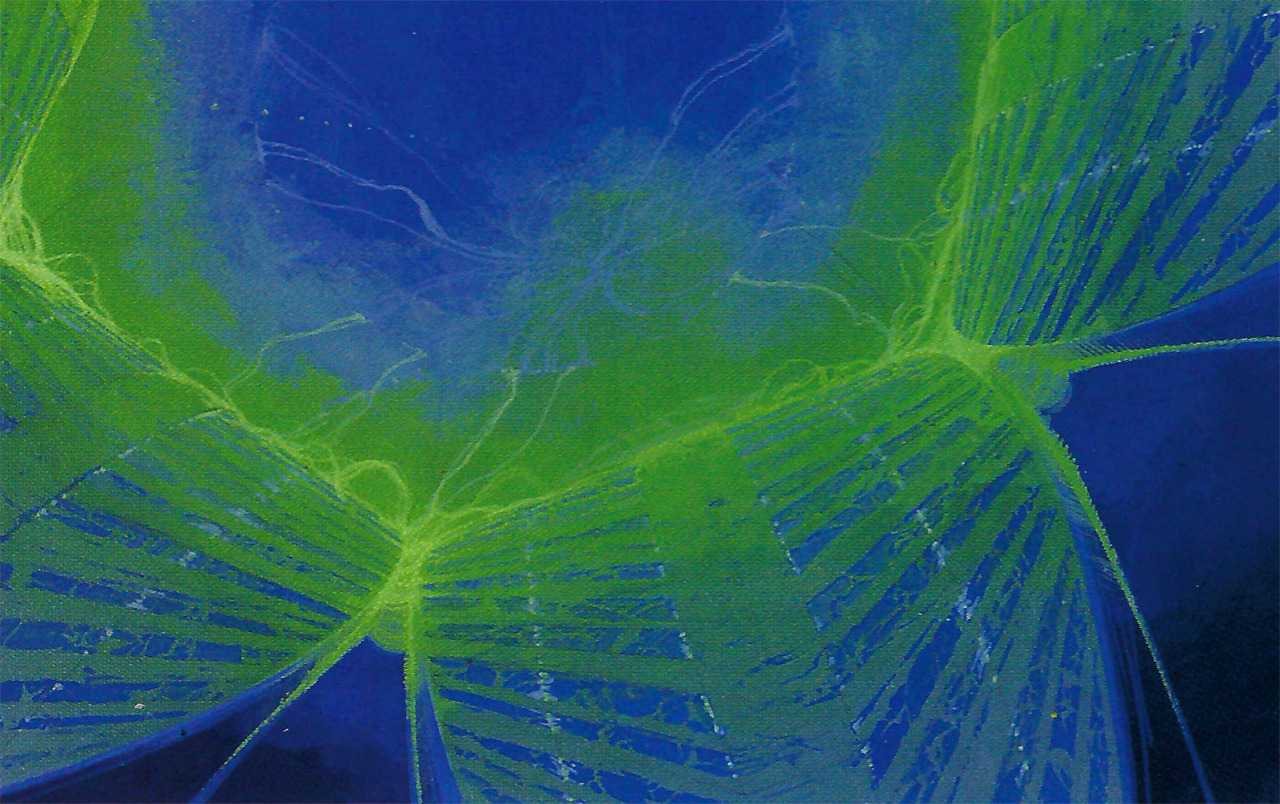



What elements from the initial Robert Abel and Associates-designed V’Ger did you integrate into your design or did you use as inspiration?
I never saw any of the Abel studio’s work. I was brought in after Paramount pulled the V’Ger design from Abel. I was also not aware that any of the Abel work was involved in the V’Ger design. I did that all by myself, utilizing the already paid-for six-axial closure aperture device.
I also created the V’Ger interior layout, which became a model about 6 or 7 feet in diameter and about 6 feet deep. This set was used when Spock disappears into the “inner” chamber of V’Ger and when the Enterprise enters the maw.
The hero model for the V’Ger footage was about 16 feet long (only one-sixth of the theoretical circumference was built) and was shot in a zero-visibility warehouse next to the existing Apogee studios in Van Nuys. A special periscope lens was developed to skim over the model’s surface at a height of about an inch and a half (I think this is correct) and the passess were all shot on the same film a over lays. This was brave; had pass six screwed up, they would have to start footage all over again. The film was produced on a tight schedule. “Wet” prints were flown around the country in chartered business jets.
